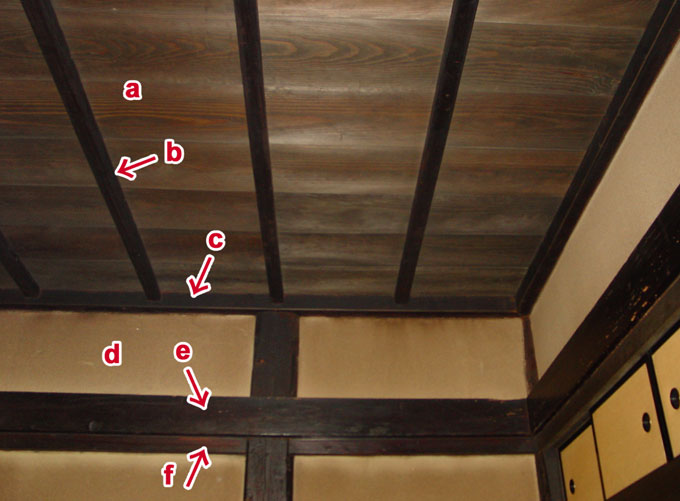| Also
written ¨Vä. A board and batten ceiling. A simple ceiling made of lightweight
boards laid in one direction over regularly spaced battens *saobuchi
Æ, placed at a right angle to the boards. The battens are usually spaced
30 to 40 p apart and made of cypress, cedar, bamboo or occasionally of small,
unstripped red pine or cherry branches. Perhaps the earliest use was in
monks' dwellings *soubou
m[, of the 7- 8c. It was also used in ordinary dwellings,
juutaku Zî, and sometimes even used in formal rooms *zashiki
À~. In temple buildings the board and batten ceiling is usually found in
the aisles *hisashi
ù, in sections of the core *moya
ê®, and in the worship area *raidou
ç°. In *sukiya ï® style
buildings that incorporated features of tea ceremony houses, the battens
are often left in a natural, rough condition. In the formal shoin
style *shoin-zukuri
@¢, the corner edges are carefully squared. Viewed in cross section the
ceiling reveals several distinctive details. Saruboomen jÊ, a batten
with six-sided chamfers, was used from the Kamakura period onward. A simple
type of batten, hirabuchi ½, is typified by a flat rectangular cut.
Other battens are chamfered at a 45angle *kirimen
ØÊ. To prevent sagging of the boards or the appearance of gaps, small slip
fasteners *inago îq,
were attached to the reverse sides. Slip fasteners were unnecessary if the
boards were secured by scarf joints *sogitsugi
Ep. |



